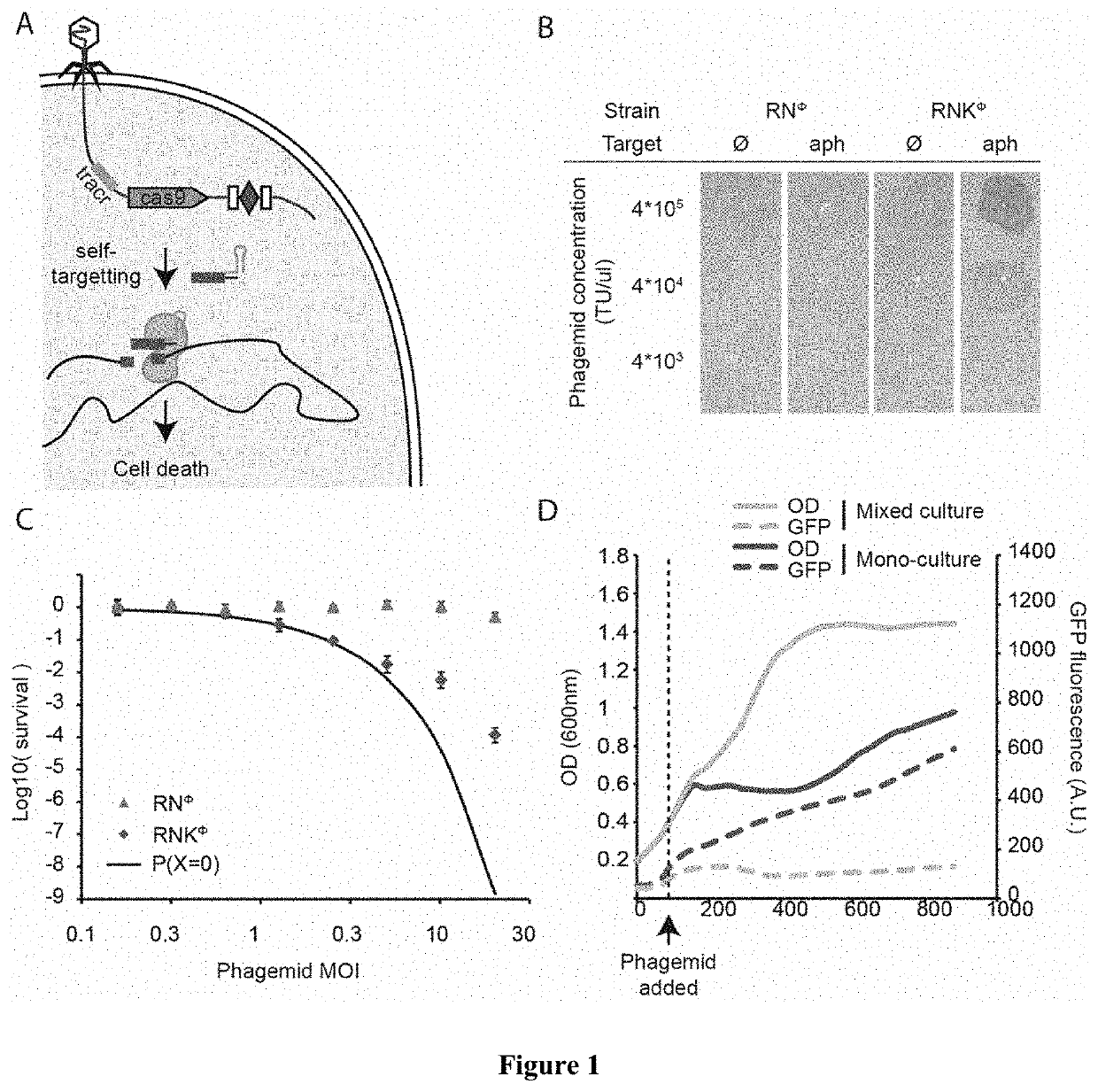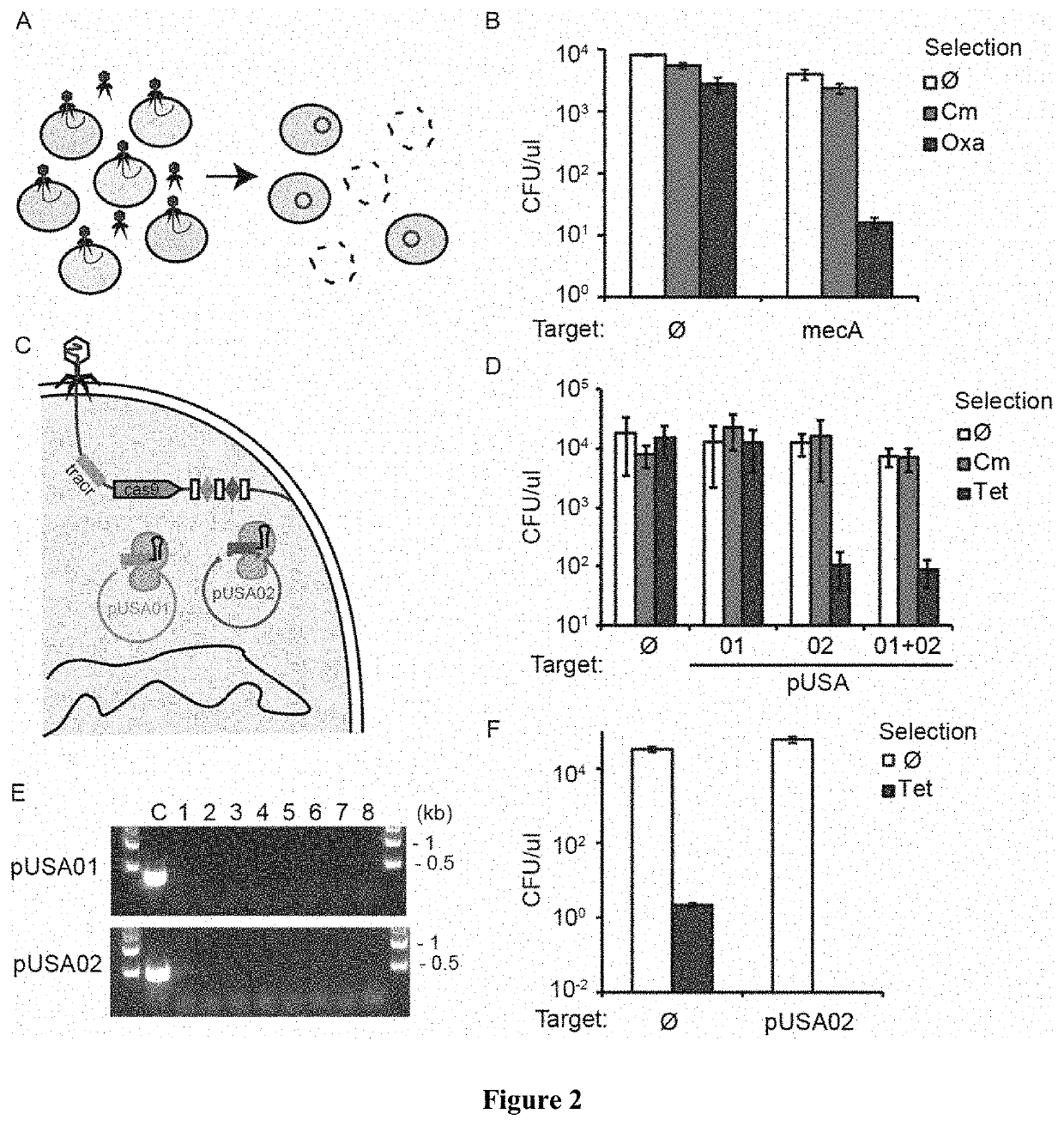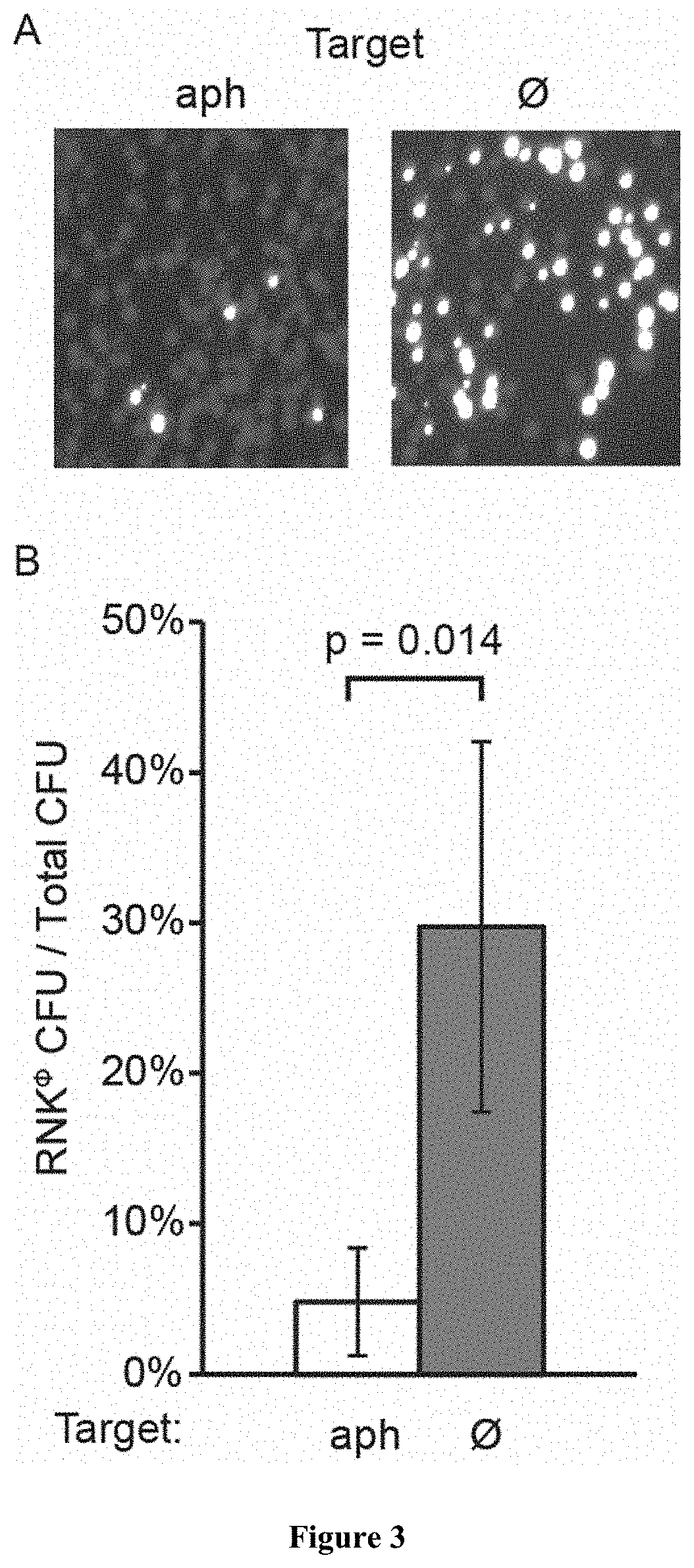Sequence specific antimicrobials
a technology of antimicrobials and sequences, applied in the field of sequence specific antimicrobials, can solve problems such as unsatisfactory side effects, and achieve the effects of reducing the amount of unwanted bacteria in the population, and reducing the amount of virulent and/or antibiotic resistant bacteria or plasmids
- Summary
- Abstract
- Description
- Claims
- Application Information
AI Technical Summary
Benefits of technology
Problems solved by technology
Method used
Image
Examples
example 1
[0050]In the present disclosure we demonstrate the feasibility of using packaged phagemids encoding CRISPR systems as sequence-specific antimicrobials that facilitate the selective killing bacteria within a heterogeneous bacteria population. To demonstrate specific embodiments of this approach, we used the cas9 gene and its RNA guide / s sequences using a phagemid, a plasmid designed to be packaged in phage capsids (FIG. 1A). We demonstrate the general applicability of this approach by using Staphylococcus aureus. We show that we can selectively kill antibiotic-resistant and / or virulent Staphylococcus aureus strains which for a variety of well-known reasons are pertinent to public health. In particular, staphylococci are at the same time the predominant members of the human skin microbiota and one of the most common causes of nosocomial infections. The recent increase in staphylococcal pathogenicity is largely the result of the transfer of antibiotic resistance and virulence genes via...
example 2
[0051]In order to develop a phagemid system for Staphylococcus aureus, we cloned a ˜2 kb fragment containing the rinA, terS and terL genes and packaging site from the staphylococcal ΦNM1 phage on plasmid pC194, obtaining pDB91. To assess the efficiency of packaging of pDB91 in ΦNM1 capsids, a transduction assay was performed. RN4220 cells containing pDB91 were infected with ΦNM1, and the lysate was used to transduce RN4220 cells previously lysogenized with ΦNM1, referred to as RNΦ. The lysogenic strain is resistant to superinfection which allows observation of phagemid transduction while negating the presence of wild-type phage in the lysate. We determined that a lysate with a titer of 1.6×107 plaque forming units (PFU) / μl contained 3.8×106 transfer units (TU) / μ1, suggesting both a high efficiency of phagemid packaging (TU / PFU, 24%) as well as a high TU titer to treat a large bacterial population (FIG. 5). We cloned the CRISPR sequences of pDB114 and pDB144::aph into the pDB91 phage...
example 3
[0052]Following treatment with conventional antibiotics that eradicate most members of a bacterial community, the rise and propagation of resistance is fueled by the lack of competitors in the treated environment. As shown above, sequence-specific killing is not exempt from the generation of cells that escape treatment, however this strategy has the benefit of killing only a subpopulation, leaving other members of the bacterial community and even of the same species to colonize the niche and limit the propagation of resistant organisms. To demonstrate this effect, we performed a treatment of RNKΦ in which the pCN57 GFP reporter plasmid was transformed, either alone or in a co-culture with RNΦ. In both cases, the treatment effectively kills the targeted population, as evidenced by an interrupted increase of OD in the monoculture and GFP signal in the mixed culture respectively (FIG. 1D). After 7 hours, RNKΦ cells that survived the treatment resume growth in the mono-culture whereas t...
PUM
 Login to View More
Login to View More Abstract
Description
Claims
Application Information
 Login to View More
Login to View More - R&D
- Intellectual Property
- Life Sciences
- Materials
- Tech Scout
- Unparalleled Data Quality
- Higher Quality Content
- 60% Fewer Hallucinations
Browse by: Latest US Patents, China's latest patents, Technical Efficacy Thesaurus, Application Domain, Technology Topic, Popular Technical Reports.
© 2025 PatSnap. All rights reserved.Legal|Privacy policy|Modern Slavery Act Transparency Statement|Sitemap|About US| Contact US: help@patsnap.com



